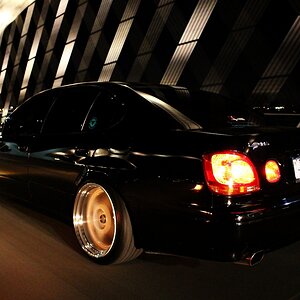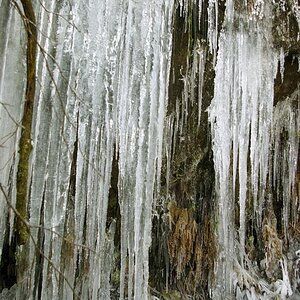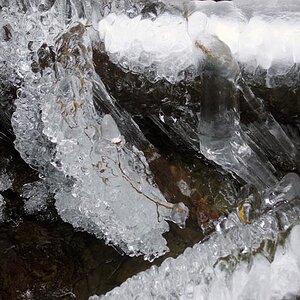spike5003
TPF Noob!
- Joined
- Jan 5, 2005
- Messages
- 364
- Reaction score
- 1
- Location
- Syracuse, NY
- Can others edit my Photos
- Photos OK to edit
Equivalent exposure is the bread and butter of low light photography and is actually very simple. It is also the most common question I get asked so I figured Id write a little tutorial.
Equivalent exposure is the art of determining the right shutter speed for a particular aperture in when the light is to low for the camera to determine it. It can also be used in bright enough light when you want a slow shutter speed for one reason or another (blurred water, blurred movement, light trails, etc.)
Basically the concept is this: If your camera meters at f/4.5 at 1/30th of a second that shot is going to have no depth of field and be just slightly blurred if the subject is moving at all (or the wind is blowing, or you are handholding it. There is another setting that will get you the correct exposure with a wider depth of field. For every f/stop higher you go (smaller aperture) you double the shutter speed. So one exposure up would be f/5.6 at 1/15th. Now you can do this infinitely (well at least to the limit of your cameras aperture settings.)
Lets take our original reading of f/4.5 at 1/30th. Lets say we are shooting a landscape at night and want a really wide depth of field, we would need a very small aperture (high f/stop number.) Lets use f/16 for example, that would give us a nice wide depth of field. So to go from f/4.5 to f/16 is 7 apertures smaller (just count the clicks.) So we have to double the shutter time 7 times so 1/30th to 1/15th to 1/8th to 1/4th to ½ to 1 second to 2 seconds to 4 seconds to 8 seconds. Now we have our new settings: f/16 for 8 seconds.
Now comes the very important part: Double all shutter times above 1 second. This is due to an overly complex photographic miracle called reciprocity failure that Ill neglect to explain because it isnt remotely important, just trust me. That being said we will actually take the picture at f/16 for 16 seconds. To achieve this youll need a tripod (obviously,) a cable release, and if your camera wont recognize a shutter speed that high youll need a stopwatch. The longer the shutter speed the less exact you have to be so if it ends up at 16.5 seconds you dont have to panic it will still be correctly exposed.
It helps to make a little chart of all the apertures and shutter speeds so you dont have to do this math on the fly. For those of you less motivated than others I will provide one.
Apertures/ Shutter Speeds
f/4.5 1/500th
f/5.6 1/250th
f/6.7 1/125th
f/8 1/60th
f/9.5 1/30th
f/11 1/15th
f/13 1/8th
f/16 1/4th
f/19 1/2
f/22 1
f/27 2
f/32 4
REMEMBER: Double all shutter times ABOVE 1 second. So 2 is actually 4 and 8 is actually 16 and etc.
For every f/stop you move, you move 1 shutter speed longer or shorter depending on which direction you are going. Higher f/stops are smaller apertures and let less light in at a time requiring a longer shutter speed and vise versa.
Now get out there tonight and try some long exposures.
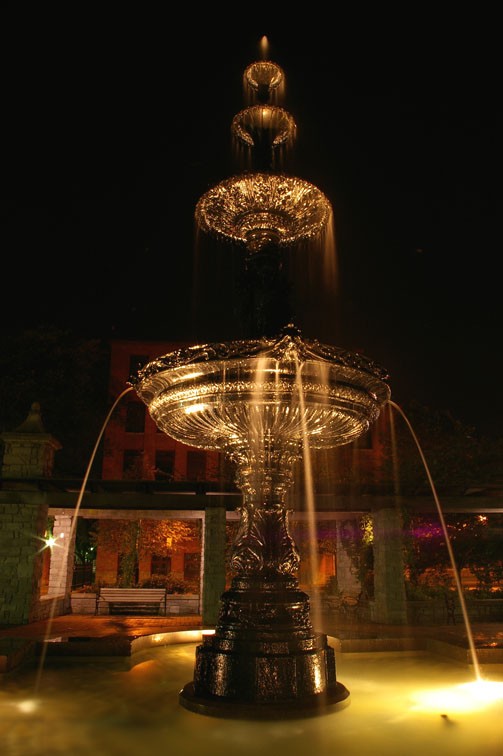
Spike
Equivalent exposure is the art of determining the right shutter speed for a particular aperture in when the light is to low for the camera to determine it. It can also be used in bright enough light when you want a slow shutter speed for one reason or another (blurred water, blurred movement, light trails, etc.)
Basically the concept is this: If your camera meters at f/4.5 at 1/30th of a second that shot is going to have no depth of field and be just slightly blurred if the subject is moving at all (or the wind is blowing, or you are handholding it. There is another setting that will get you the correct exposure with a wider depth of field. For every f/stop higher you go (smaller aperture) you double the shutter speed. So one exposure up would be f/5.6 at 1/15th. Now you can do this infinitely (well at least to the limit of your cameras aperture settings.)
Lets take our original reading of f/4.5 at 1/30th. Lets say we are shooting a landscape at night and want a really wide depth of field, we would need a very small aperture (high f/stop number.) Lets use f/16 for example, that would give us a nice wide depth of field. So to go from f/4.5 to f/16 is 7 apertures smaller (just count the clicks.) So we have to double the shutter time 7 times so 1/30th to 1/15th to 1/8th to 1/4th to ½ to 1 second to 2 seconds to 4 seconds to 8 seconds. Now we have our new settings: f/16 for 8 seconds.
Now comes the very important part: Double all shutter times above 1 second. This is due to an overly complex photographic miracle called reciprocity failure that Ill neglect to explain because it isnt remotely important, just trust me. That being said we will actually take the picture at f/16 for 16 seconds. To achieve this youll need a tripod (obviously,) a cable release, and if your camera wont recognize a shutter speed that high youll need a stopwatch. The longer the shutter speed the less exact you have to be so if it ends up at 16.5 seconds you dont have to panic it will still be correctly exposed.
It helps to make a little chart of all the apertures and shutter speeds so you dont have to do this math on the fly. For those of you less motivated than others I will provide one.
Apertures/ Shutter Speeds
f/4.5 1/500th
f/5.6 1/250th
f/6.7 1/125th
f/8 1/60th
f/9.5 1/30th
f/11 1/15th
f/13 1/8th
f/16 1/4th
f/19 1/2
f/22 1
f/27 2
f/32 4
REMEMBER: Double all shutter times ABOVE 1 second. So 2 is actually 4 and 8 is actually 16 and etc.
For every f/stop you move, you move 1 shutter speed longer or shorter depending on which direction you are going. Higher f/stops are smaller apertures and let less light in at a time requiring a longer shutter speed and vise versa.
Now get out there tonight and try some long exposures.

Spike


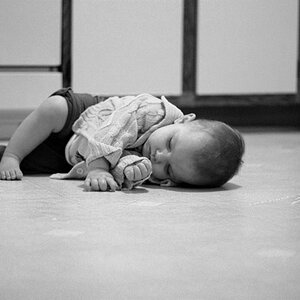
![[No title]](/data/xfmg/thumbnail/37/37494-d432dd0601f47668ec55d04f350f243b.jpg?1619738113)
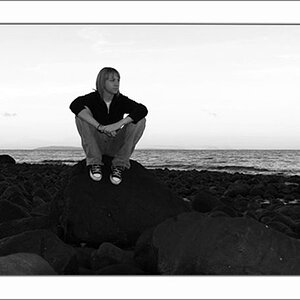
![[No title]](/data/xfmg/thumbnail/31/31753-281132967af6a422c89bcc0d6f16499a.jpg?1619734991)
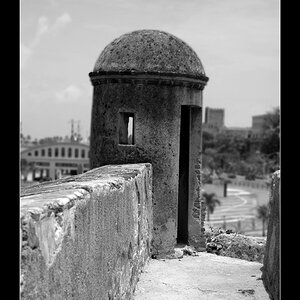
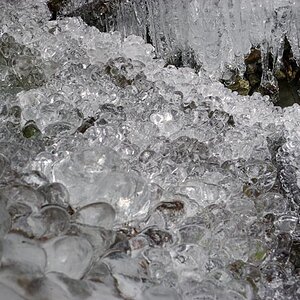
![[No title]](/data/xfmg/thumbnail/31/31754-af76ae89cc75bd1855937374ff359efe.jpg?1619734992)
